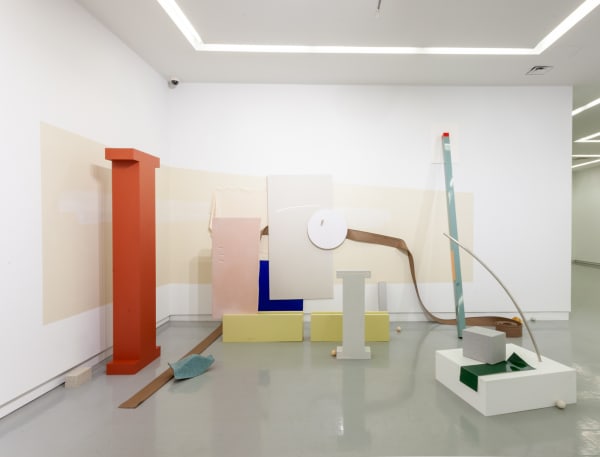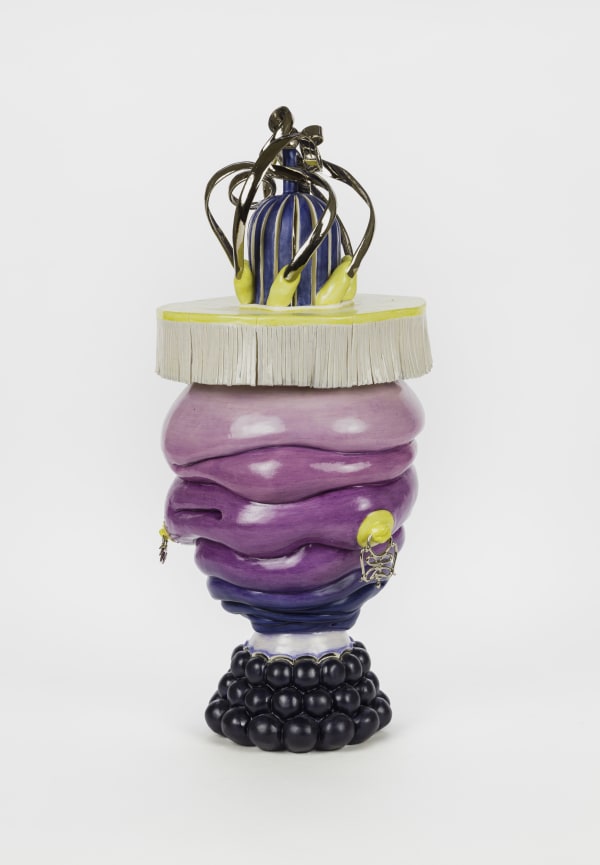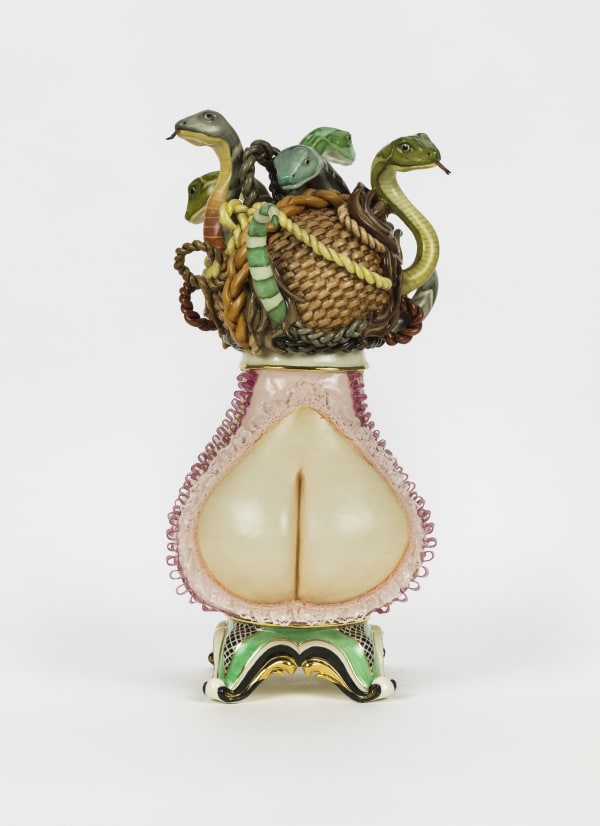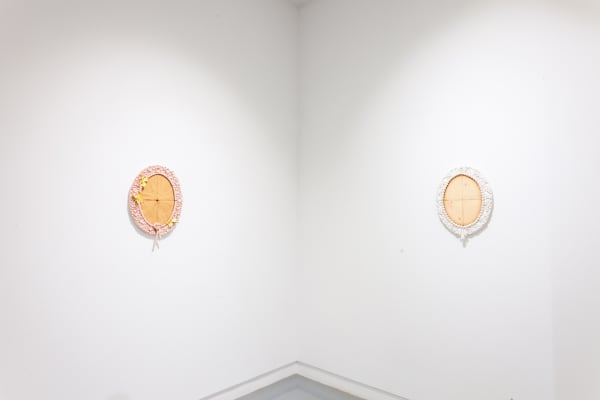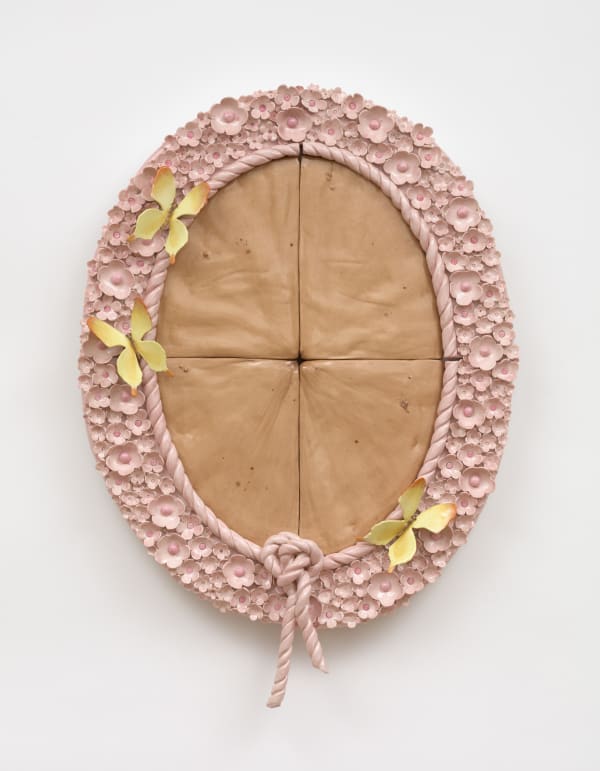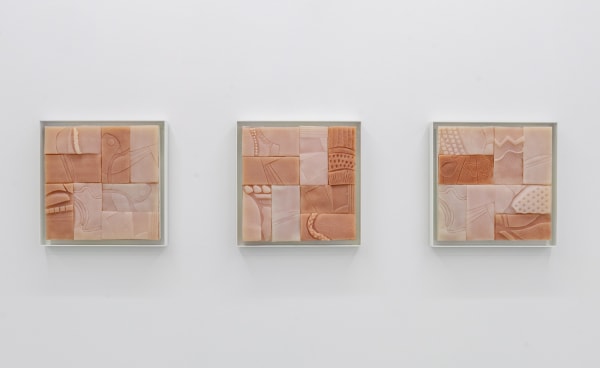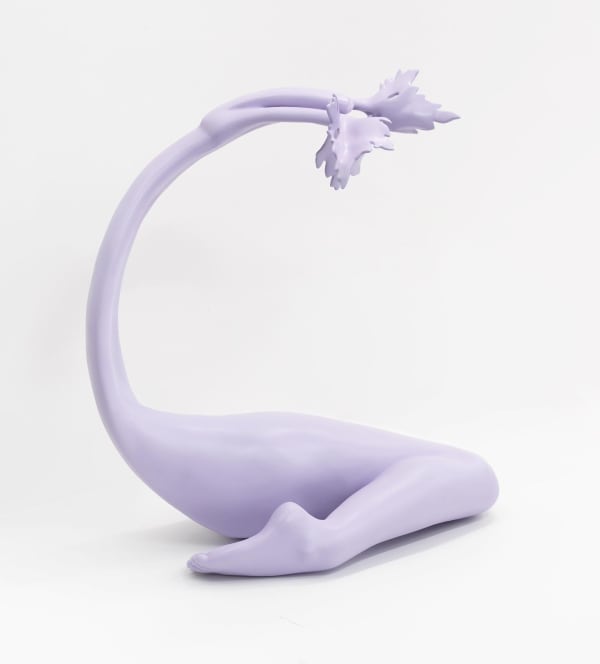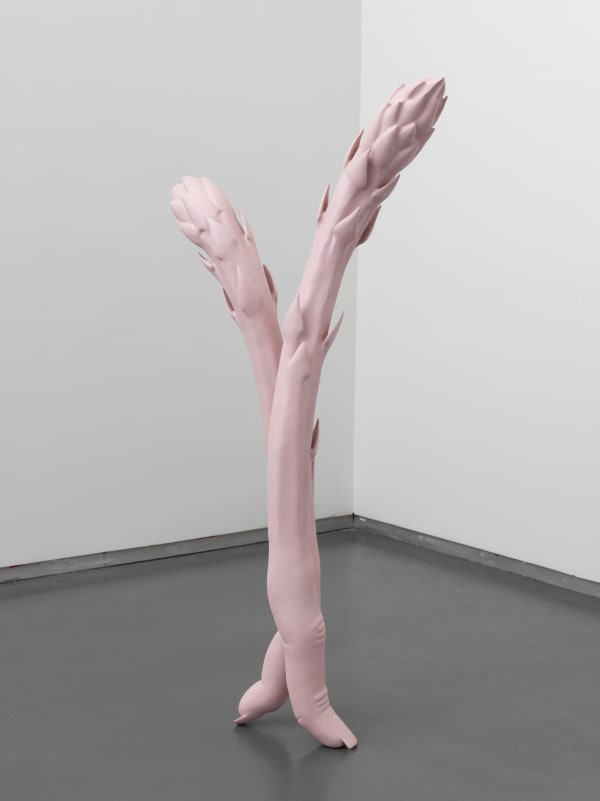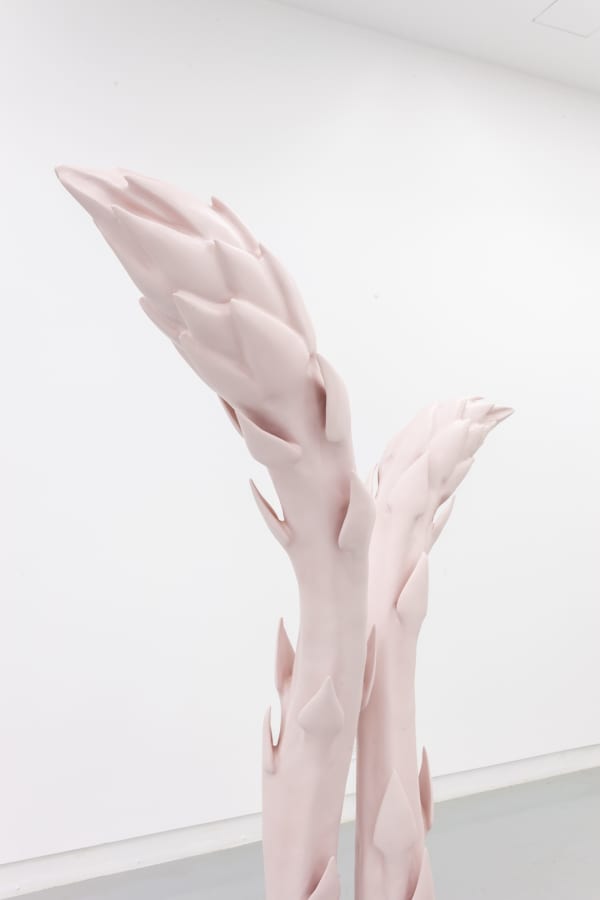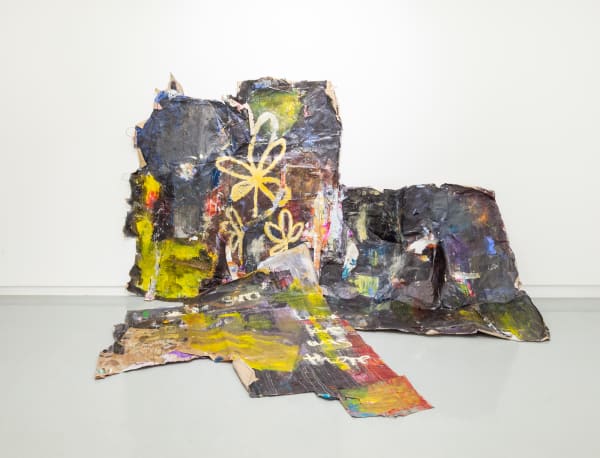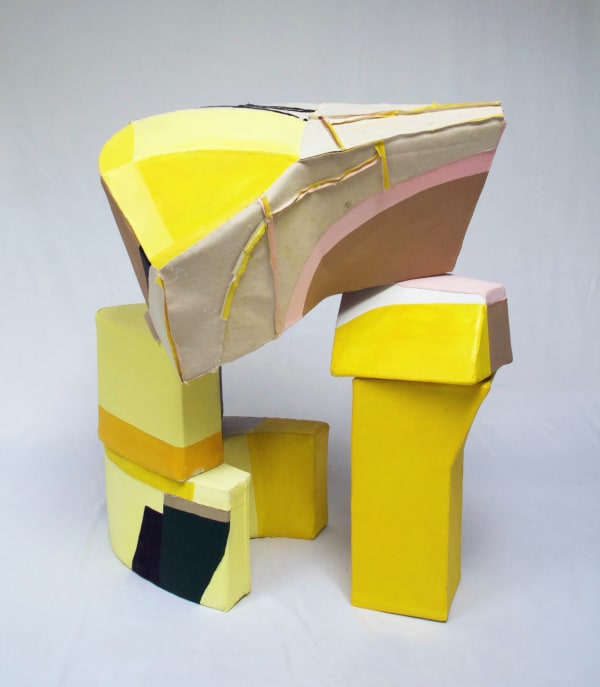-
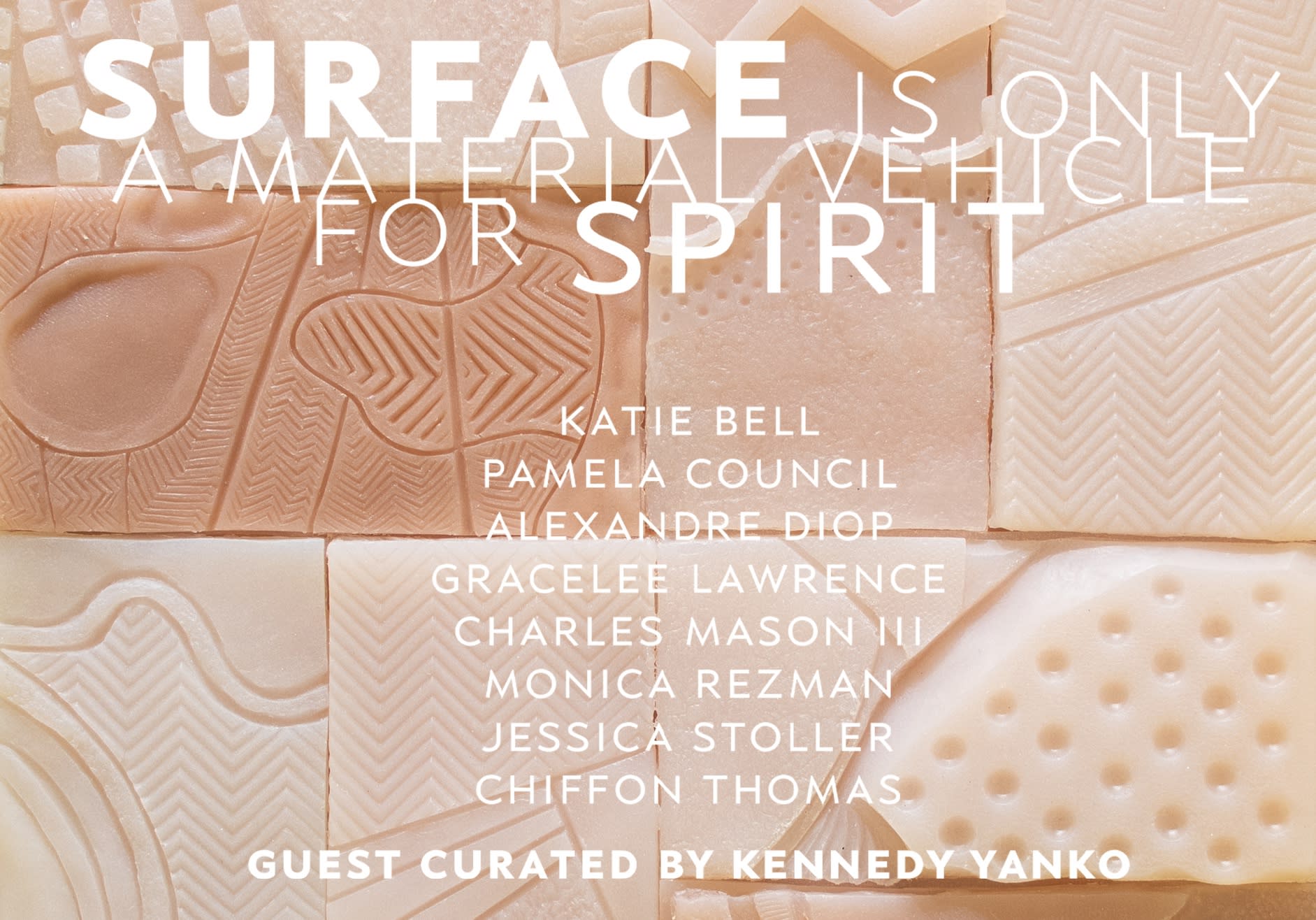
-
Kavi Gupta presents Surface is Only a Material Vehicle For Spirit, a group exhibition curated by artist Kennedy Yanko.
As a sculptor, Yanko has long been fascinated with the metaphysical aspects of materiality. Her practice is rooted in the blending of seemingly disparate elements, such as rusted metal salvaged from a junk yard with delicately hand-poured paint skins crafted in the studio. The work deftly creates space for examinations of dualities, such as hard versus soft, the industrial versus the hand-made, and the valued versus the discarded.
In this, her curatorial debut with Kavi Gupta, Yanko brings together works by eight dynamic voices within the field of contemporary abstraction to further explore the potentialities that arise as the human mind struggles to interpret relationships between surface reality, incorporeal illusion, and transcendental insight.
“What is the disconnect between our innate knowingness and our optic interpretations of the world around us?” Yanko asks. “I am presented with something seemingly concrete in front of me only to find it is soft and supple. What happens inside me as my brain tries to understand and recalibrate itself?That dissonance is the conduit to a greater understanding—the disruption to our seeming truth that evokes consciousness.
Surface is Only a Material Vehicle For Spirit will feature a new, site-specific installation by Katie Bell, along with works by Pamela Council, Alexandre Diop, Grace Lee Lawrence, Charles Mason III, Monica Rezman, Jessica Stoller, and Chiffon Thomas.
-
-
-
Katie Bell (b. 1985, USA) is a multidisciplinary artist renowned for her site-specific installations, which incorporate a mixture of found and fabricated materials, and respond to specific aspects of the space they occupy. Bell’s critically acclaimed oeuvre has established her as a leading contemporary protagonist of Expanded Painting.
Bell has compared the various elements that make up her installations to letters within an evolving visual alphabet. When configured in response to a specific environment, these elements come together in novel ways to create narratives that leave room for interpretation.
The forms, shapes, colors, lines, and textures in her installations may be read in correlation with a range of familiar formal vocabularies found throughout the history of abstract painting, while the spaces and atmospheres that manifest in the work may relate variously to stage environments, dream space, and fantasy landscapes.
-
-
-
Jessica Stoller (b. 1981, USA) is a ceramic artist whose work creates tension by subverting the associations people have with her materials and forms. The work puts incongruous elements in dialogue, like a pimple and a peony, or a ball of snakes and human buttocks, juxtaposing what might be considered beautiful with what might be considered grotesque.
Stoller is interested in the dichotomies presented by her medium and subject matter. She relates the tactile, sensuous, and complicated process of working with ceramics to the various reactions viewers have to the work—especially as they first encounter the ornamentation she adds to her sculptures, and then slowly confront the more difficult and surprising aspects of the composition.
Instantly recognizable elements in Stoller’s sculptures compete for attention with elements in the work that are askew and strange. Stoller deftly finds the balance between the two, using the delicacy and beauty of the material to seduce viewers, until the disjointed visual cues finally stifle and complicate their gaze.
-

-
-
Chiffon Thomas (b. 1991, USA) is a multidisciplinary artist who works in hand-embroidered mixed media paintings and ceramic sculpture. The work mobilizes a mixture of figurative and abstract elements to articulate broader concepts about the body and identity.
Thomas is interested in the systematic structures that designate elites within American society, usually white men, and entitle them to articulate the needs of other people’s bodies. Thomas’s works examine how those elites assign identities to members of society, and based off those identities speak for these other people’s experiences.
To create her sculptures, Thomas brings together cast concrete molds and readymade objects, such as milk crates and columns, to create hybrid forms that suggest objectified and demobilized human figures, trapped within, or perhaps breaking free from, fantastical outer shells.
-
-
-
Pamela Council (b. USA) is a multidisciplinary artist working in sculpture, printing, installation, and performance. Their work deploys surreal and uncanny forms and an assortment of found and fabricated materials to explore a conceptual framework Council calls “blaxidermy”—a blend of taxidermy and blacksploitation.
Many of Council’s works, such as their Fountains for Black Joy, take the form of structures or objects viewers might normally associate with dedications to the deceased or monuments to the past. A playful and vivid color palette of pinks, purples, yellows, and greens lends the work a whimsical presence, while darkly humorous materials, such as synthetic nails, crack pipes, red drink, and sneaker silicone, allude to a commercial culture that trades in superficiality and sickness.
One recent body of work incorporates squares of silicone into abstract compositions that relate to Council’s experiences working in the sneaker industry. Council assembles the silicon tiles into geometric grids, creating stoic, formalist arrangements next to dynamic gestural patterns emanating from the varied textures, which are themselves sampled from the Reebok texture archives.
-
-
Alexandre Diop (b. 1995, France) is a Franco-Senegalese abstract artist whose process is guided by the physical realities of the materials he employs in his works. Using everyday objects such as books, photographs, metal, and wood, as well as elements like animal hair, fire, and rust, Diop expresses sympathy with the traditions of the Arte Povera movement.
Diop describes his approach as occupying a zone between painting, sculpture, and relief. Legibility is one of his main concerns. To be legible, something must make immediate sense, which can be challenging in the context of abstract art. Diop finds legibility not within the metaphysical aspects of his work, or within subjective interpretation of meaning, but rather in the corporal facts embedded within the materials themselves.
He recalls once early in his education making a painting on a wooden door and being frustrated with it, until he pasted a scrap of paper to the surface. The certainty of the paper—what was expressed by its reality without the need for any elaboration from him as an artist—made an impression that forever altered Diop’s understanding of his work.
-
-
-
Gracelee Lawrence (b. 1989, USA) is a sculptor and extended media artist whose work deals with relationships between food, the body, and technology.
Methodologically, Lawrence employs digital technology, such as scanning, 3-D printing, and digital fabrication, in order to construct the images and objects she ultimately creates. Conceptually, her work resolves in a dreamlike space in which feminine forms amalgamate with biomorphic forms or the forms of organic food stuff, such as celery stalks, sticks of asparagus, pineapples, and leaves.
A key concern in Lawrence’s practice is what it means to be an organic, physical body—whether human, vegetable, or animal—in digital space. Her works suggest a realm populated by biocyberorganisms, or an uncanny space between the physical and the digital. The works diligently mimic idealized forms of the real-world subjects on which they are based, while the matte colors the works are coated with are specific to the palette of digital rendering software.
-
-
Charles Mason III (b. 1990, USA) is an abstract painter whose work leverages symbolic content—such as the color black, hidden text, and repeated pictorial motifs like flowers and bricks—to create interpretive aesthetic spaces that address grief, mourning, and morbidity.
Mason asks how blackness can be experienced abstractly through installation and materials. While creating his work, internally he may be responding to specific contemporary events and narratives that relate to his experience moving through the world as a Black person. Meanwhile, his choice to deploy abstraction as an aesthetic strategy creates a space of freedom from such narratives, both for himself as an artist and for the viewers.
“I’m often frustrated when someone arrives at the conclusion that my work is political or politically aware,” Mason says. “Just recently a friend asked about the artist’s role. What should Black artists be doing with their work? We should be doing what we want to do, point blank and period.”
Mason’s brut forms, rough textures, and use of non-traditional mediums connect the work conceptually to notions of decay and questions about social and material value. The concepts and the content are there—they occupy physical and metaphysical space, but they are also a form of distraction. Formal aesthetic principles are also at work, as are notions of beauty and resistance. Viewers have the freedom and the responsibility to choose for themselves whether to acknowledge, reject, or ignore whatever references are perceptible within the work.
-
-
-
Monica Rezman (b. USA) is a multidisciplinary artist whose dynamic studio practice is grounded in an exploration of feeling and intimacy within abstraction.
After initially studying painting at the School of the Art Institute of Chicago in the 1970s, Rezman expanded her practice to include textiles, drawing, sculpture, photography, and installation. The evolutions in her work are intricately tied to her experiences traveling and living for long periods in Italy, India, Guatemala, and Mexico, among other places. Incorporating the everyday materials and novel methods connected with specific locations where she has lived and worked, Rezman has developed an idiosyncratic aesthetic language that speaks to the collective totality of her experiences.
Several of Rezman’s bodies of work incorporate human hair, from photographs that explore the emotion conveyed in the physical state of a person’s hair style, to formal abstract paintings and sculptures that incorporate hair as a linear or gestural element in the work. Recently, Rezman has been working with found cardboard and burlap sacks, building elemental sculptures that straddle a range of visual sensibilities from biomorphism to geometry, evoking a universe populated with abstract, hybrid synthetic-organic forms.
